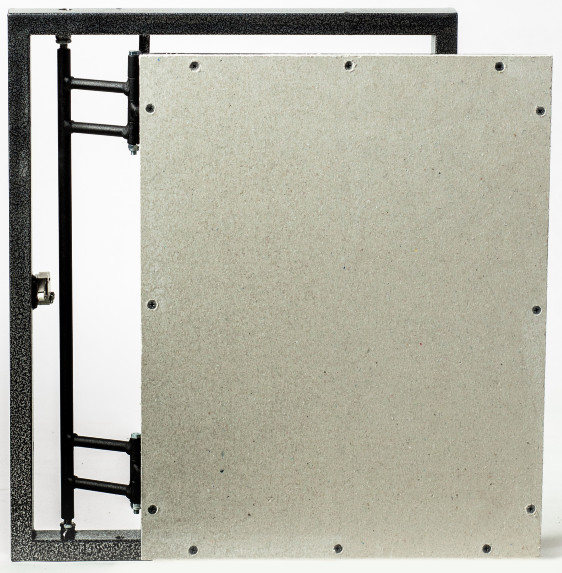Inspector Hatches

The “Inspector” pressure hatch is often installed when it is necessary to provide instant access to utilities such as cables, pipes, meters, and so on. The external elements of the lid are often coated for the interior: painted, covered with wallpaper or even ceramic tiles.
Such structures can be easily placed on various types of surfaces, it can be the floor, ceiling, or walls. Moreover, it is possible to install them in plasterboard partitions, inside which communication paths are laid. Often, such hatches are installed under tiles in basements.
The “Inspector” push hatch has a standard opening mechanism: light pressure from the outside causes the mechanical latch to be triggered, which pulls the hatch forward. After this, the cover moves to the side and provides access to the communications located inside.
Advantages of pressure hatches "Inspector"
The product described above has proven itself well, since it is characterized by a lot of advantages. This is about:
- Preserving the appearance of finishing materials, even if they are decorated with patterns or designs.
- Complete invisibility after completion of installation and cladding work, since technological seams can be filled with silicone compound.
- Possibility of using almost any facing materials such as natural stone, tiles or even mirrors.
- A durable and reliable design that allows doors to be faced with heavy building materials.
- Materials that are resistant to water and other factors, and also guarantee excellent sound insulation.
- A special hatch mechanism ensures complete closure of the front panel without the risk of damaging the facing material.
- Quick and comfortable access to utility lines hidden in a niche to be able to detect breakdowns and fix them.
Technical characteristic
The hatch under the “Inspector” tile is installed in brick, concrete, foam concrete, plasterboard and other walls. The design is available for use in rooms with high levels of humidity (we are talking about the kitchen, bathroom, etc.), as it is airtight and able to withstand heavy loads.
The operation of the system itself can be described as follows: the energy that is stored by the springs during the closing of the hatch is spent on opening it after the holding components of the latch are disengaged by pressing the hand. There are no “electric motors”. As a result, safety against short circuits is guaranteed, even if a lot of water is accidentally spilled on the sash.
In systems where flaps are too large, specific braking devices are used. Including those whose action is associated with the passage of air from one cavity to another through narrow slits along spiral channels. Thanks to this kind of devices, the most comfortable use of pressure hatches is ensured. But they are not always the basis of the basic configuration.
How to choose an inspector hatch
Before you buy a pressure hatch for the “Inspector” tile , you need to familiarize yourself with the rules for choosing it. In general, the selection of a particular model is associated with parameters such as:
- The size of the tile that should open (determined by the customer).
- The size of the hatch door itself.
- The size of the opening for the hatch (determined by the customer).
It is also worth understanding that the ceramic tiles that are glued to the door must extend beyond its dimensions from 0.5 to 7 cm. Entry from the hinge side is allowed up to 5 centimeters. In this case, about 60 percent of the tile area should be glued to the hatch door.
